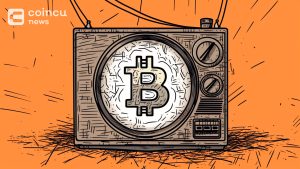Web 3.0 iterates the third generation of Internet services that aims to understand and analyze data to provide a semantic web. It enables data sharing across multiple systems, platforms, and community boundaries, linking various data formats and media.

The Data Access Protocol (DAP) is an open standard that makes remote data accessible to clients, including web browsers, that support its lightweight HTTP-based protocol. It is a system that grants outsiders access to databases without overloading the system.
Requirements Of A Web 3.0 DAP
Volumes of data and new content to be managed are created and increase every day. Data access technologies such as databases, search engines, or query APIs are so ubiquitous that they are barely considered when architecting software solutions. As Web 3.0, blockchain-powered, decentralized applications evolve, infrastructure blocks such as data access will become more regarded in solution architecture.
A well-defined Web 3.0 data access protocol has to meet specific capabilities:
1. Data Access
In Web 3.0, there is a higher level of information connection facilitated by semantic metadata. As a result, the user experience evolves into a new level of connectivity that leverages all available information.
Internet content and services can be accessed anywhere via devices rather than exclusively via computers and smartphones. Web 2.0 is already universal in many ways, but the development of IoT devices will propel it to new levels.
We no longer rely only on our traditional desktop pcs to access the internet via web browsers. Our home devices such as TVs, music systems, cell phones, smartwatches, and even cars are now internet-connected.
The web is present in everything we do, giving rise to exponential growth in data and the creation of highly accurate and extensive data-based profiles of everything users do.
2. Query Records Based On Attributes
The next frontier of the Web is the Semantic Web. The Semantic Web upgrades web technologies to generate, share and connect information through search and analysis by focussing on the meaning of words rather than by keywords or numbers.
Artificial Intelligence: By coupling semantic capabilities with natural language processing, computers will understand information on a human-like level to provide faster and more relevant results. As more search data is collected, AI improves in interpreting what searchers are seeking, heightening intelligence and better satisfying users’ needs.
AI will soon fit into Internet 3.0, allowing blogs and other online platforms to sift data and tailor them to individual users’ liking. AI will ultimately provide users with the best filtered and unbiased data possible.
3. Navigate the Blockchain

Besides introducing machine learning and connecting machines through IoT, web 3.0 runs on decentralized protocols. Therefore, it is essential to find a possible merge of blockchains. Networks in the semantic web exhibit interoperability, automation by leveraging smart contracts, seamless integration, and censorship-resistant storage of P2P data files. Therefore, it is pretty clear that blockchain would serve as a critical driving force.
Blockchain plays a vital role in evolving the usual data storage and management approaches. It offers a unique collection of data subject to collective management. This state layer creates the arena for developing a value settlement layer on the internet which sends files in a copy-protected manner to enable effective P2P transactions without intermediaries.
Blockchain allows the storage of data in multiple copies of the P2P network. The protocol helps in the approved specification of management regulations in the protocol. Additionally, the protocol guides data security through mass agreement from all participants.
Most importantly, it supports the development of a governance layer running over the existing internet. The governance layer allows two unknown people who don’t trust each other to reach agreements and settle transactions over the internet. The functionalities of blockchain would focus on introducing a backend revolution. Technically, web 3.0 is a collection of blockchain-based protocols that concentrate on changing the backend wiring of the internet.
4. Decentralized Governance

Data is stored within a peer-to-peer interconnection in a decentralized network. Users maintain ownership over their data and digital assets and can log in securely over the internet without being tracked.Web3 is conceptualized as giving the right of data back to end-users through decentralization. Web3 seeks to build new protocols and infrastructure that allow developers to build apps where users bring their data and where identity is no longer tied to any specific platform.
A decentralized web depends on a peer-to-peer network built upon a community of users. Websites and applications are hosted on user-community devices and are later distributed across hundreds of nodes located elsewhere.
The Chances of a server crash, hackers taking down a website, or an authoritarian government controlling and censoring opinions are significantly reduced.
With blockchain technology, user data is protected and encrypted, preventing large companies from controlling and using users’ data for their gain.
Author’s Take
The evolution of web 3.0 calls for a well-defined and established Data Access Protocol for it to level up. One such protocol is The Graph.
The Graph is a decentralized protocol that facilitates the indexing and querying of data via ‘subgraphs.’ It optimizes Data acquisition from any supported source, beginning with the Ethereum ecosystem, thus allowing efficient querying of blockchain data without relying on centralized service providers.
Some of these DAP requirements have been met by isolated technologies. However, hope is pegged on The Graph to put delivery on all these capabilities in a single protocol.
DISCLAIMER: The Information on this website is provided as general market commentary and does not constitute investment advice. We encourage you to do your own research before investing.
Join CoinCu Telegram to keep track of news: https://t.me/coincunews
Follow CoinCu Youtube Channel | Follow CoinCu Facebook page
Annie
CoinCu News




















